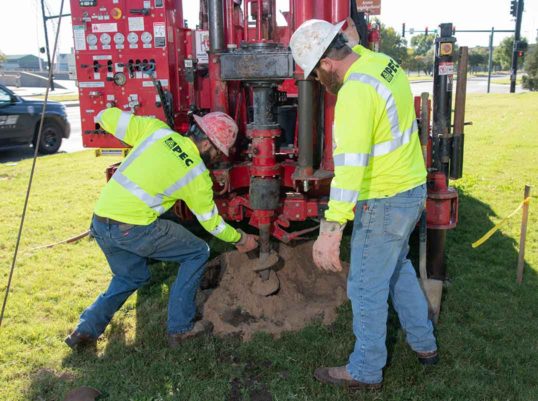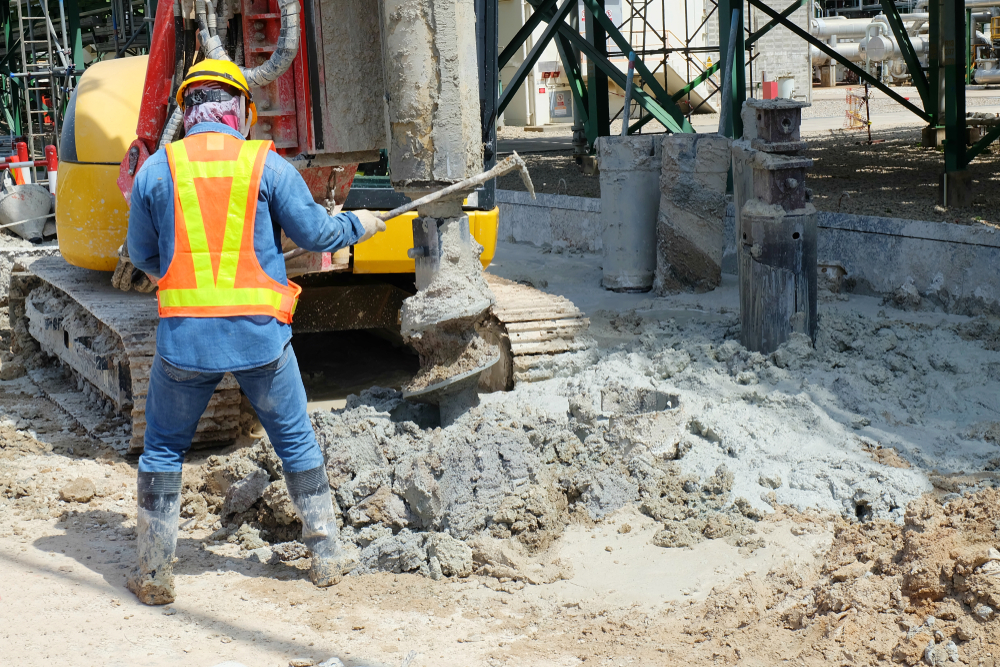A Comprehensive Overview to Becoming a Successful Geotech Engineer
Wiki Article
Understanding the Comprehensive Duty of Geotechnical Engineers in Ground Examination and Soil Evaluation for Construction Projects
Geotechnical engineers are integral to the success of construction tasks, giving important understandings via comprehensive ground investigations and dirt evaluation. Their know-how in examining soil actions and using sophisticated screening techniques notifies crucial choices that promote architectural honesty and safety.Duty of Geotechnical Designers
The crucial function of geotechnical designers in construction jobs can not be overstated, as they give essential understandings right into dirt habits and site conditions. These experts are entrusted with examining the suitability of the ground for various kinds of structures, guaranteeing safety and security and security throughout the building and construction process. Their proficiency includes a variety of activities, consisting of site characterization, dirt tasting, and research laboratory testing, which are essential for determining the mechanical and physical homes of the soil.Geotechnical engineers utilize their findings to develop foundational styles that accommodate load-bearing demands and mitigate threats connected to soil negotiation, liquefaction, and incline stability. They play an important role in identifying potential threats, such as groundwater fluctuations and contamination, which can considerably affect job stability. Moreover, they collaborate with designers, civil designers, and professionals to ensure that geotechnical factors to consider are incorporated into the general design and building and construction phases.
Ground Examination Strategies
Ground examination methods develop the backbone of geotechnical design, allowing engineers to obtain a comprehensive understanding of subsurface conditions. These techniques are important for assessing soil homes, determining groundwater levels, and identifying possible geological hazards.Usual approaches include borehole exploration, which enables for the extraction of soil examples at different midsts, giving vital data for evaluation. Additionally, sitting screening methods, such as Common Infiltration Examinations (SPT) and Cone Infiltration Tests (CPT), are used to examine dirt toughness and density directly in the ground.
Geophysical techniques also play a considerable function in ground examinations. Techniques such as seismic surveys and electric resistivity tomography assistance analyze subsurface features without comprehensive excavation. civil consulting engineers. These non-invasive methods are specifically beneficial in large or delicate areas where disruption should be reduced
Furthermore, exploratory trenches can be excavated to visually inspect soil layers and determine any anomalies. Each of these methods adds unique insights, permitting geotechnical engineers to create accurate site analyses and educate design choices. In recap, a mix of these ground examination methods is essential for effective building tasks, guaranteeing safety and architectural stability.
Dirt Analysis Methods
Dirt evaluation techniques are important for comprehending the chemical and physical residential or commercial properties of soil, which directly affect the style and building of structures and various other frameworks. Various strategies are employed to examine soil qualities, making sure that geotechnical engineers obtain accurate information for notified decision-making.One frequently made use of technique is grain size evaluation, which figures out the distribution of bit sizes within a soil sample. This is crucial for identifying dirt types and predicting their actions under lots. One more necessary method is Atterberg limitations testing, which assesses the plasticity and moisture web content of fine-grained soils, offering understandings right into their engineering homes.

Area tests, such as Conventional Penetration Examinations civil consulting engineers (SPT) and Cone Infiltration Examinations (CPT), deal useful in-situ information pertaining to soil stamina and stratification. Collectively, these soil analysis techniques develop the structure of geotechnical examination, enabling designers to design efficient and risk-free structures tailored to the particular conditions of the site.
Threat Mitigation Methods
Implementing efficient danger reduction strategies is crucial for geotechnical engineers to deal with prospective obstacles in building and construction projects. These approaches are vital in identifying, evaluating, and managing risks linked with dirt problems, site security, and groundwater changes, which can detrimentally influence job outcomes.One main technique involves carrying out extensive site examinations that use sophisticated geophysical methods and thorough soil tasting. By acquiring exact information on subsurface conditions, designers can make informed choices on layout and construction approaches. Additionally, employing predictive modeling devices enables the simulation of different circumstances, enabling engineers to anticipate potential troubles and carry out preventative steps.
Additionally, developing clear interaction networks amongst job stakeholders fosters a collective method to run the risk of management. Normal updates and examinations guarantee that all parties understand the progressing website conditions and can adjust their approaches accordingly.

Effect On Building And Construction Projects
The efficiency of threat mitigation techniques straight influences the overall success of building and construction tasks. Geotechnical engineers play a crucial function in this domain, as their experience in ground investigation and dirt evaluation educates vital decisions throughout the building and construction process. By accurately evaluating dirt problems and recognizing prospective hazards, these specialists enable project teams to design efficient solutions that minimize threats related to ground instability, water infiltration, and other geotechnical obstacles.The impact of extensive geotechnical analysis is evident in numerous facets of building projects, including price management, task timelines, and structural stability. Early identification of concerns enables prompt treatments, decreasing costly delays and budget overruns. An extensive understanding of website problems enhances the design and engineering procedure, ensuring that frameworks are built to endure environmental stress and prospective all-natural disasters.
Eventually, the contributions of geotechnical engineers are integral to the successful implementation of building and construction jobs. Their job not just fosters security and conformity with guidelines but additionally boosts the lasting sustainability of frameworks, making certain that they perform effectively throughout their desired life-span. The partnership between other stakeholders and geotechnical teams is essential for attaining ideal results in construction endeavors.
Conclusion
To conclude, geotechnical engineers do a crucial feature in construction tasks with thorough ground examinations and soil analyses. Their competence in analyzing dirt habits, using numerous investigation techniques, and executing threat mitigation methods considerably adds to the structural honesty and security of developed environments. By teaming up with multidisciplinary teams, these professionals enhance project effectiveness and make certain compliance with security requirements, inevitably leading to successful building and construction results and lowered prospective dangers.Geotechnical designers are integral to the success of building projects, offering crucial insights via comprehensive ground investigations and dirt analysis.The pivotal duty of geotechnical designers in building tasks can not be overemphasized, as they offer crucial understandings right into dirt actions and site conditions. Their know-how encompasses a vast range of activities, including site characterization, soil sampling, and research laboratory testing, which are crucial for determining the mechanical and physical residential properties of the dirt.
By properly analyzing soil conditions and identifying prospective dangers, these specialists make it possible for job teams to develop efficient remedies that reduce threats connected with ground instability, water seepage, and other geotechnical obstacles.
In conclusion, geotechnical designers do an essential function in construction projects via comprehensive ground examinations and dirt evaluations.
Report this wiki page